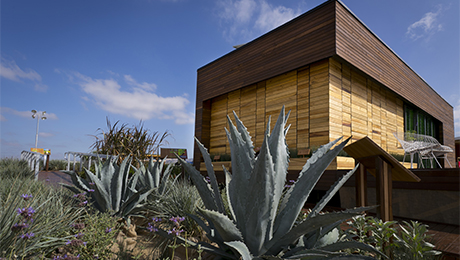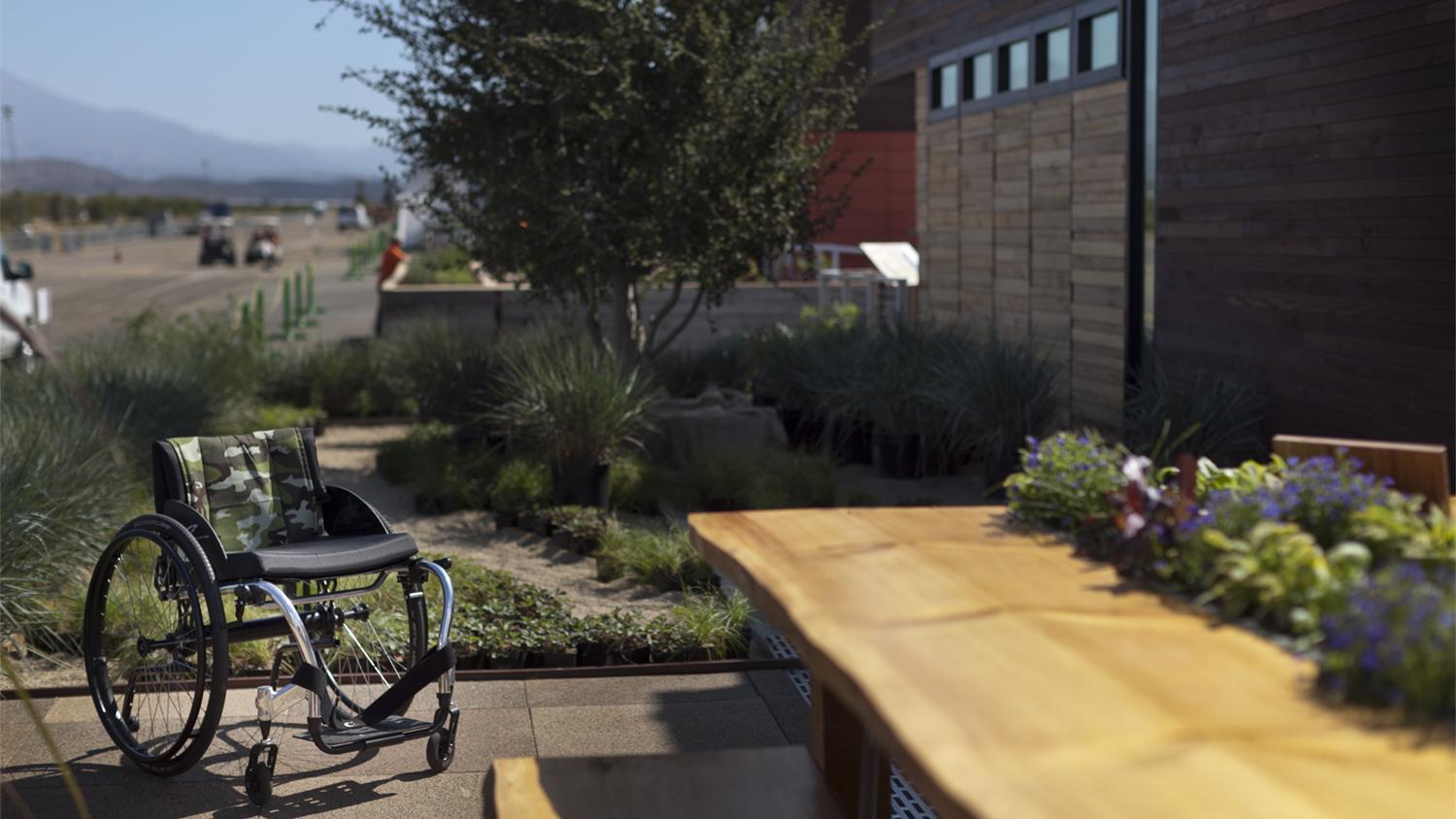Two years ago, students and faculty from George Washington, American and Catholic universities combined to form Team Capitol DC, the first team to represent the nation’s capital in the U.S. Department of Energy’s Solar Decathlon.
Since then, the team has conceptualized, designed and built Harvest Home, a 700-square-foot sustainable structure and garden, which was ranked among the top 10 structures in the bi-annual competition this weekend.
“This whole process has been truly incredible,” said Danielle Barsky, a team member and graduate student in GW’s School of Engineering and Applied Science.
“Experiencing the home's transformation from a drawing on paper to a final physical project in only two years was the most exciting aspect of the experience,” she said.
Team Capitol DC placed seventh among 20 finalists representing universities across the globe, in the final round of the competition held in Irvine, Calif., from Oct. 3 to 13.
“Stepping back and looking at all that we have been able to accomplish, seventh place feels sort of like first,” said Claire Ainsworth, a graduate student at Catholic University and the measured contest captain.
Harvest Home will be donated to a veteran client through Wounded Warrior Homes, a nonprofit organization that assists returning U.S. military veterans who are transitioning from active-duty military service to independent living by providing affordable housing.
“Knowing that Team Capitol DC's mission to provide a healing home to a wounded warrior was fully accomplished and hearing the overwhelmingly positive comments of the visiting public were the highlights of this experience,” said W. M. Kim Roddis, a faculty mentor and civil and environmental engineering professor in SEAS.
"This was truly an interdisciplinary collaboration for students and faculty," said Catherine Anderson, a faculty mentor and assistant professor of interior design in GW's Columbian College of Arts and Sciences. "Without engineers, architects, interior designers and landscape designers coming together to create a beautiful, sustainable house, Harvest Home would not have been realized."
Ms. Ainsworth agreed.
“We have won more through this experience than any of the contests could begin to measure since our home will be the only house to fulfill its unique mission to serve as a safe, comfortable and healing environment for a wounded veteran,” she said.
Each team was evaluated by juries and through performance measurements in 10 categories including, architecture, market appeal, engineering, communications, affordability, comfort-zone, hot water, appliances, home entertainment and energy balance.
The scores for each individual category were combined to calculate the overall scores. Team Austria from the Vienna University of Technology took home the top prize for their home, called LISI.
2013 marked the closest competition ever with only two- to three-point differences in scoring between teams.
Harvest Home and the other 19 finalists tied for first place in the energy balance category, receiving a perfect score for having a net positive energy balance.
Team Capitol DC also received a score above 98 on a 100-point scale for appliances, home entertainment and comfort zone, placing second in these categories.
“With four out of 10 finishes of first or second place, clearly our students designed and built a house that could really perform,” Dr. Roddis said. “The sustainable landscape design done by GW was praised over and over again by the juries.”
GW President Steven Knapp and his wife, Diane Robinson Knapp, toured the home and attended the Harvest House Dinner, a formal evaluation in the Home Entertainment portion of the competition attended by members of opposing teams.
“We’re proud of the collaboration not only within GW, but also with our neighboring institutions,” he said. “Harvest Home demonstrates how our students harness their passion for changing the world through concrete, innovative projects, all while continuing to promote such university values as service and leadership.”
Dr. Knapp also addressed Orange County alumni and friends during “GW Day at the 2013 Solar Decathlon,” hosted by SEAS and the GW Orange County Alumni Network.
Though the structure was originally assembled in Washington, Team Capitol DC disassembled the home, flew to California and reassembled the structure in less than two weeks.
Each home was rebuilt in the “Solar Decathlon Village,” the site of the competition in Orange County Great Park.
According to Ms. Barsky, the reassembly was a test of the team’s efficiency and teamwork that resulted in an early victory. Team Capitol DC was the first team to assemble its structure, connect to the power grid and generate electricity through solar panels.
“All of the homes of the Solar Decathlon Village were placed along one street, called ‘Decathlete Way,’” Ms. Barsky said. “Once I saw Harvest Home it hit me that it was finally time to bring to life the home that our team had worked on for two years!”
Team Capitol DC led an average of 2,000 public visitors through Harvest Home each day, totaling more than 15,000 visitors.
Educating the public and sharing the culmination of their efforts was the most rewarding part of the experience, Ms. Ainsworth said.
“We have gained immeasurable experience by designing, building and occupying this home,” Ms. Ainsworth said. “I am so honored to have been a part of this team and to have worked with the more than 100 people who contributed to Harvest Home.”










